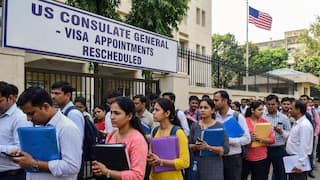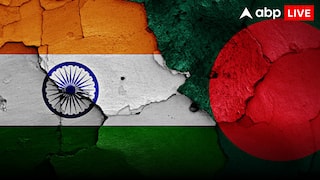Stock Market Opens Lower: Sensex Down More Than 400 Pts, Nifty50 Trading Below 17K; All Sectors Open In Red
Stock Update: On the 30-share Sensex platform, only HUL and Titan were trading with gains. On the flip side, IndusInd Bank, Tata Steel, Tata Motors, Tech Mahindra, and M&M were among the early losers

The two key equity benchmarks, Sensex and Nifty, on Monday morning, opened lower amid subdued global cues. At 9.30 am, the S&P BSE Sensex shed 475 points to 57,515. On the other hand, the broader NSE Nifty50 was down 124 points to 16,976.
On the 30-share Sensex platform, only HUL and Titan were trading with marginal gains. On the flip side, IndusInd Bank, Tata Steel, Tata Motors, Tech Mahindra, and M&M were among the early losers.
Among individual stocks, shares of Adani Enterprises sippled 2.77 per cent, with JSW Steel, HDFC life, Apollo, and Hindalco all bleeding red. On the other hand Dr Reddy, BPCLm HUL, and Titan were trading with marginal gains.
In the previous session on Friday, the S&P BSE Sensex ended 355 points higher at 587,990. On the other hand, the NSE Nifty 50 moved 114 points higher and reclaimed the 17,100 level.
In the global markets, the US equity futures inched higher in the morning after the UBS Group sealed the Credit Suisse takeover to calm markets. Dow Jones Futures, the S&P 500 Futures, and NASDAQ Futures climbed up to 0.6 per cent.
However, Asia-Pacific markets fell today, with Nikkei 225, the S&P 200, Kospi, Topix, and Hang Seng indices lowering to 0.8 per cent.
V K Vijayakumar, Chief Investment Strategist at Geojit Financial Services told MoneyControl, "The fears of financial contagion rising from the banking crisis in US and Europe appear to be largely contained by the quick response of the governments and central banks. The big learning from the global financial crisis of 2008 is that failure of large financial institutions will lead to systemic issues leading to financial contagion and ultimately to recession. Learning from this crisis, this time there has been a concerted global action - the latest being the buyout of Credit Suisse by UBS - to contain the crisis. The volatility index in the US at around 25 doesn’t indicate any panic like in 2008. However, investors may remain cautious and wait for stability. The boost to India’s macros arising from reduction in trade deficit and big decline in Brent crude to $73 are positives from the market perspective."
In the commodity market, Brent Crude and WTI Crude prices surged up to 0.3 per cent to $73 per barrel, and $66 per barrel, respectively.
Meanwhile, Rupee rose 10 paise to 82.49 against the US dollar in early trade. At the interbank foreign exchange, the domestic unit opened stronger at 82.48 against the US dollar and then slipped to 82.52. It gained further to 82.48, registering a gain of 11 paise.
On Friday, the rupee settled at 82.59 against the US dollar. Meanwhile, the dollar index, which gauges the greenback's strength against a basket of six currencies, was 0.16 per cent higher at 103.87.
On Friday, foreign institutional investors (FIIs) were the net sellers and sold Indian equities worth Rs 1,766.53 crore while domestic institutional investors (DIIs) were net buyers at Rs 1,817.14 crore.






































